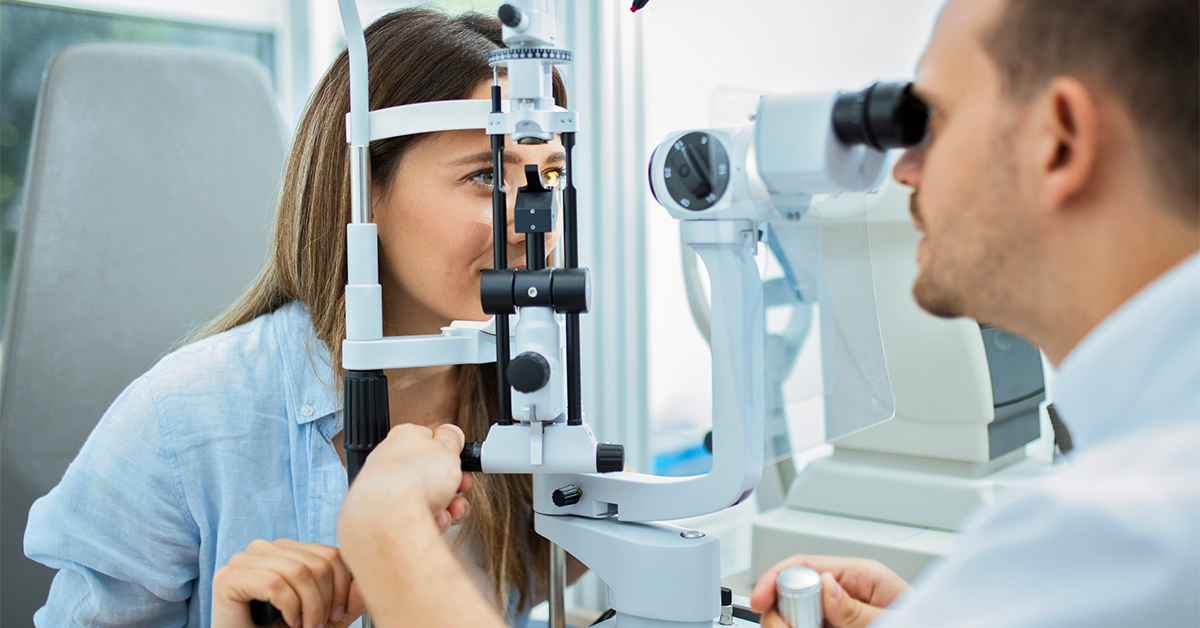Exploring the most up to date Technological Advancements in Optometry and What They Mean for Eye Doctors
In the ever-evolving field of optometry, recent technical advancements are improving exactly how specialists come close to eye care. From the accuracy of Optical Coherence Tomography to the nuanced insights used by AI-driven diagnostic tools, these developments are establishing new criteria in client assessment and treatment. Teleoptometry is positioned to redefine availability, guaranteeing that know-how transcends geographical constraints. As these improvements permeate the method, optometrists are confronted with the difficulty of embracing these tools to boost client end results. Yet, the question stays: how will these technological changes redefine the duties and responsibilities within the career?
Innovations in Diagnostic Tools
Progressing the area of optometry, advancements in analysis tools have changed the means eye treatment experts evaluate and diagnose aesthetic problems and eye conditions. The previous decade has witnessed substantial technical advancements, enabling even more precise and thorough analyses.
Another secret innovation is the introduction of innovative corneal topography systems, which map the surface curvature of the cornea with accuracy. These tools are especially advantageous for suitable call lenses and diagnosing corneal conditions. Electronic retinal imaging has changed traditional ophthalmoscopy, using in-depth, breathtaking sights of the retina that facilitate comprehensive visual evaluations.
The advancement of wavefront aberrometry has actually likewise been critical, making it possible for the evaluation of refractive mistakes with unparalleled precision (Eye Doctor). This technology helps in personalizing restorative lenses and improving surgical results for refractive surgical treatments. Jointly, these diagnostic improvements equip optometrists to deliver exceptional client care, guaranteeing very early treatment and customized therapy approaches, inevitably enhancing visual health and wellness results
AI in Individual Management
Structure on the foundation of sophisticated diagnostic devices, the incorporation of fabricated intelligence (AI) in person administration stands for a transformative leap for optometry. AI systems are significantly employed to improve performance, accuracy, and customization in person treatment.
Additionally, AI-driven platforms assist in structured client communications and management processes. Automated scheduling, online consultations, and customized follow-up strategies not just improve client satisfaction however additionally maximize time management for specialists. These systems can triage clients based upon the necessity of their conditions, making sure that those in crucial demand get timely focus.
Moreover, AI enhances decision-making by providing optometrists with evidence-based suggestions and treatment paths. By integrating data from digital health records, AI tools provide insights that inform scientific choices, minimizing the threat of mistakes and enhancing individual end results. As AI remains to advance, its duty in person monitoring will likely increase, improving the landscape of optometric treatment.
Developments in Retinal Imaging
In the world of optometry, retinal imaging has actually experienced impressive technical advancements that are boosting analysis capabilities and individual care. Advancements such as Optical Coherence Tomography (OCT) and fundus photography have actually revolutionized how eye doctors envision and analyze the retina. OCT, in specific, provides high-resolution, cross-sectional images of the retina, permitting the thorough assessment of its layers. This ability is indispensable for early discovery and administration of conditions like glaucoma, diabetic retinopathy, and age-related macular deterioration.
Enhanced imaging techniques like OCT angiography are more refining diagnostic precision. Eye Doctor Optometrist. Such improvements assist in the recognition of minute retinal modifications that might indicate disease progression.
In addition, advancements in fabricated intelligence are augmenting retinal imaging by allowing computerized evaluation of huge datasets. These systems assist optometrists in identifying patterns a sign of pathology, consequently boosting analysis precision and performance. Jointly, these innovations are transforming retinal imaging into a foundation of contemporary eye treatment, enhancing results and increasing healing opportunities.
Teleoptometry's Expanding Duty
Teleoptometry is significantly ending up being an important component of eye treatment, driven by improvements in digital communication and analysis devices. This is particularly beneficial in country and underserved locations where access to specialized eye treatment is commonly limited.
The assimilation Full Article of expert system (AI) more enhances teleoptometry, making it possible for the analysis of aesthetic data and aiding in the discovery of eye conditions such as glaucoma and diabetic person retinopathy. AI-powered algorithms can rapidly translate complex imaging information, providing eye doctors with valuable insights that strengthen medical decision-making.
In addition, teleoptometry supports connection of care with smooth integration with digital health records (EHRs), allowing optometrists to keep comprehensive individual histories. When consulting with different professionals., this ensures that clients obtain consistent and individualized care even.
Despite these advantages, challenges stay, consisting of making certain information security and managing client expectations. Nonetheless, teleoptometry stands for a substantial stride towards more accessible, efficient, and patient-centered eye care. As technology develops, its role is poised to expand even more.

Future Trends in Eye Care
A myriad of cutting-edge fads is readied to improve the future of eye care, driven by technological developments and the developing needs of clients. One significant pattern is the integration of synthetic intelligence (AI) in diagnostics, which assures to boost the precision and efficiency of eye examinations. AI formulas can assess huge amounts of data from retinal photos, potentially spotting conditions like diabetic person retinopathy and glaucoma earlier than standard methods.
In addition, tailored medicine is obtaining grip in optometry, with genetic screening notifying customized therapy plans. This technique intends to enhance patient end results by customizing treatments to private hereditary profiles. Wearable technology, such as wise contact lenses, is likewise imminent, supplying real-time tracking of intraocular stress or glucose degrees, thus This Site supplying continuous understandings into systemic and eye health and wellness.
The fostering of enhanced fact (AR) and virtual fact (VR) in training and individual education is one more arising pattern. These technologies use immersive experiences that can enhance understanding and abilities both for optometrists and people. As these patterns advance, optometrists have to remain abreast of technical improvements to provide innovative treatment, ensuring enhanced individual end results and contentment in the dynamic landscape of eye care.
Final Thought

Collectively, these analysis innovations equip optometrists to supply remarkable individual care, ensuring very early intervention and customized treatment strategies, inevitably enhancing visual health and wellness results.

As these modern technologies continue to progress, eye doctors should adjust and integrate them right into method, ultimately maximizing process effectiveness and raising the requirement of eye care delivered to individuals.